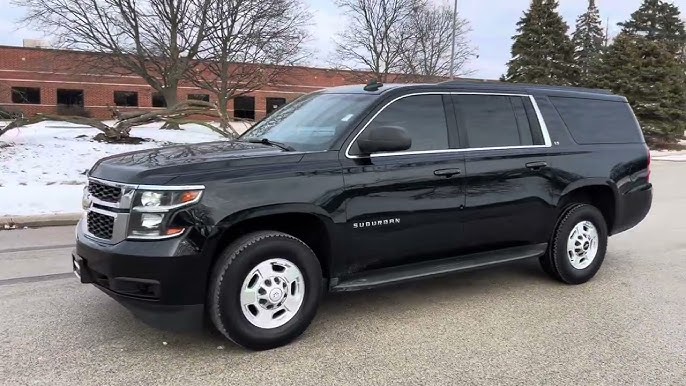In an era dominated by bucket seats, center consoles, and increasingly individualized driving experiences, the classic front bench seat has become something of an endangered species in the automotive world.
Once a standard feature that defined American motoring, allowing three passengers to sit comfortably across the front of the vehicle, bench seats represented a different philosophy in car design one that prioritized spaciousness and togetherness over driver-focused ergonomics.
The decline of the front bench seat coincides with the rise of sporty driving dynamics, the proliferation of center-mounted controls and storage, and changing safety regulations.
Yet, for those who value the unique advantages of bench seating, whether for practical capacity reasons, nostalgic appeal, or simply the ability to slide closer to your passenger on a long drive there remain a handful of models that preserve this increasingly rare feature.
This article explores twelve vehicles that continue to offer front bench seating options, maintaining a connection to automotive heritage while adapting to modern requirements.
From work-ready pickup trucks to spacious family sedans, these vehicles demonstrate that in some segments of the market, the practical benefits of a continuous front seat still resonate with buyers seeking maximum passenger capacity and a touch of old-school charm in their driving experience.
1. Ford F-150 XL and XLT Trims
The Ford F-150, America’s best-selling vehicle for over four decades, remains one of the few modern vehicles where front bench seating continues as an available option, specifically in its workhorse XL and value-oriented XLT trim levels.
This configuration, officially referred to as the “40/20/40 split-bench,” provides seating for three across the front with a middle section that can convert between a seat and a fold-down armrest with cupholders and storage.
The practicality of this arrangement cannot be overstated for working professionals and fleet managers. When ordered with the bench seat option, an F-150 can comfortably transport six adults, three in front, three in back, making it ideal for work crews who need to travel between job sites without requiring multiple vehicles.
The middle front position includes a proper three point seatbelt and reasonable legroom, thanks to a transmission hump that’s been engineered to be less intrusive than in previous generations.
Ford has managed to modernize the bench seat concept while preserving its functionality. The seat material in XL models is a durable vinyl designed to withstand the rigors of daily work use, while XLT models upgrade to a more comfortable cloth upholstery.
Both feature subtle bolstering that provides more support than the flat benches of yesteryear without compromising the continuous seating surface.
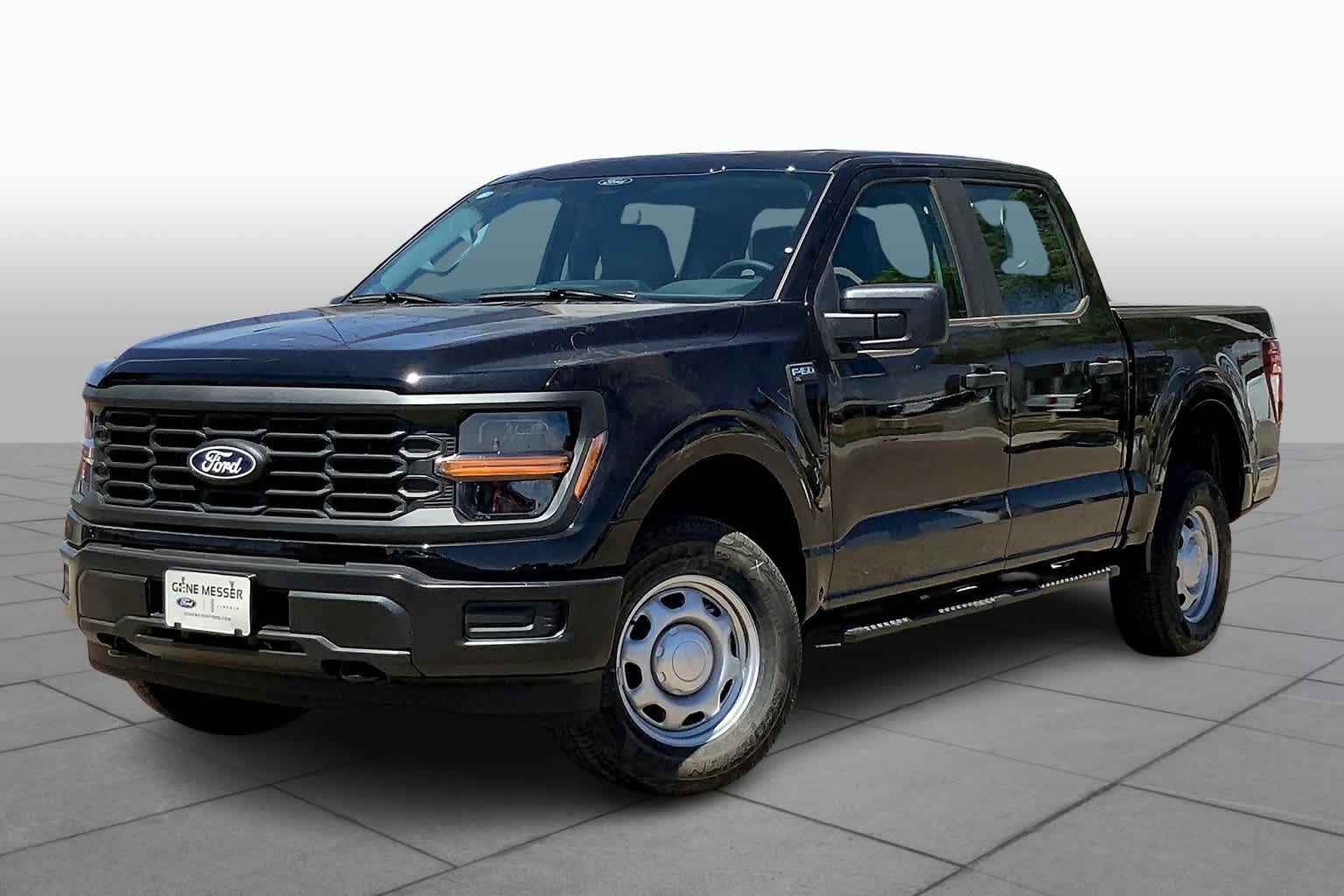
The center position converts to a surprisingly functional workspace when not occupied by a passenger. Folded down, it reveals a large armrest with cupholders, but also offers a flat surface that can accommodate paperwork, tablets, or laptops, essentially becoming a mobile office for contractors and site managers.
Some configurations even include power outlets nearby, enhancing the versatility of this space. What’s particularly noteworthy is how Ford has integrated modern technology around the bench seat concept.
Despite the absence of a traditional center console, the F-150 still provides accessible controls for the infotainment system, climate functions, and drive modes.
The column-mounted shifter another traditional element that enables the bench configuration has been retained while being updated with modern electronic controls rather than mechanical linkages.
For buyers who prioritize maximum passenger capacity without stepping up to crew-cab models, or who simply appreciate the traditional feel of a truck with a bench seat, the F-150’s continued offering represents one of the most refined implementations of this classic feature in today’s market.
2. Chevrolet Silverado 1500 WT and Custom Trims
Chevrolet’s commitment to traditional truck values is evident in its continuation of the front bench seat option in the Silverado 1500, available specifically in the Work Truck (WT) and Custom trim levels.
This seating arrangement follows the familiar 40/20/40 split configuration that has become the modern interpretation of the classic bench seat, allowing for versatile use of the front cabin space depending on passenger and storage needs.
The Silverado’s implementation of bench seating stays true to the utilitarian roots that make this feature particularly valuable in the pickup segment.
The seats themselves strike a careful balance between durability and comfort, with WT models featuring vinyl upholstery specifically engineered to withstand the demands of work environments resistant to stains, tears, and general wear that comes with commercial use.
The Custom trim upgrades this to a more comfortable cloth material while maintaining the bench configuration, appealing to personal-use buyers who still want the additional passenger capacity.
What distinguishes Chevrolet’s approach is the thoughtful integration of modern convenience features despite the traditional seating arrangement.

The center position backrest folds down to reveal not just a standard armrest but a surprisingly comprehensive center console alternative, complete with cupholders, small-item storage, and a surface suitable for writing or holding a mobile device.
Some configurations even include cleverly positioned USB ports and power outlets within reach of this makeshift workspace. The ergonomics have been carefully considered as well.
The column-mounted shifter a necessity for preserving the full width of the bench, has been designed to operate smoothly without the chunky, industrial feel that characterized older truck shifters.
The dashboard controls are laid out to be accessible from any seating position, with climate and audio functions placed higher on the center stack where they can be easily reached by the driver or passengers.
For fleet managers and work crews, the Silverado’s bench seat configuration transforms the truck into a genuine six-passenger vehicle when combined with the standard three-person rear bench.
This configuration eliminates the need for a second vehicle in many work scenarios, providing significant cost savings and logistical advantages for businesses that need to transport teams to job sites. Chevrolet has managed to preserve this traditional feature while adapting it to contemporary expectations of comfort and functionality.
The Silverado’s bench seat option represents more than just nostalgia, it’s a practical solution for specific work-related needs while offering a connection to the heritage of American trucks that continues to resonate with a significant segment of buyers who value maximum versatility in their vehicle’s interior configuration.
3. RAM 1500 Tradesman and Bighorn Models
The RAM 1500 continues the tradition of offering front bench seating in its Tradesman and Bighorn trim levels, standing as one of the few remaining vehicles where this classic seating configuration can still be found.
RAM’s approach to the bench seat concept blends workhorse functionality with surprisingly refined execution, particularly in the more premium Bighorn variant.
RAM’s implementation follows the industry-standard 40/20/40 split design, but with several thoughtful touches that enhance both comfort and utility.
The bench itself features more substantial padding and anatomical contouring than the bench seats of previous generations, acknowledging that today’s truck owners often spend many hours behind the wheel.
Even in the base Tradesman trim, the bench offers decent support, while the Bighorn upgrades to a more generously cushioned version with higher-quality cloth upholstery that rivals the comfort of individual bucket seats.
What distinguishes the RAM’s front bench configuration is the exceptionally functional center section. When folded down, it transforms into what RAM calls a “business console,” a workspace substantially more comprehensive than what competitors offer.
This console includes deep cupholders designed to secure various container sizes, a dedicated smartphone shelf with available wireless charging capability, multiple small-item storage compartments, and a flat top surface large enough to accommodate folders or a small laptop.
The proximity to power outlets and USB ports makes this a genuinely useful mobile office solution for contractors and field professionals.

The engineering considerations extend beyond just the seat itself. RAM has designed the front cabin architecture specifically to accommodate this seating arrangement without compromise.
The dashboard layout features climate controls positioned higher on the center stack for easy access from any seating position. The rotary gear selector mounted on the dashboard rather than a traditional column shifter represents a modern solution that preserves floor space while offering intuitive operation.
For buyers who regularly need six-passenger capacity, the RAM 1500’s bench seat configuration delivers particular value. The front middle position offers a properly contoured seatback and a three-point seatbelt, making it genuinely usable for adult passengers on longer trips not merely an occasional extra seat.
Combined with RAM’s spacious rear bench, this creates one of the most comfortable six-passenger environments available in any current production vehicle.
The clever packaging extends to storage solutions as well. In bench-equipped models, RAM incorporates additional under-seat storage compartments that partially compensate for the lack of a traditional center console, ensuring that practical storage space isn’t significantly compromised by choosing the three-across seating configuration.
Through thoughtful design and attention to detail, RAM has managed to preserve the practical advantages of front bench seating while adapting the concept to meet contemporary expectations for comfort, convenience, and functionality, proving that this traditional feature still has relevant applications in today’s truck market.
4. GMC Sierra 1500 Base and SLE Trims
The GMC Sierra 1500, in its Base and SLE trim levels, continues to offer front bench seating as part of its commitment to providing versatile, work-ready configurations while maintaining the brand’s reputation for professional-grade execution.
This increasingly rare seating arrangement represents a thoughtful balance between traditional utility and modern comfort in GMC’s approach to truck interior design.
Unlike some competitors that limit bench seating exclusively to their most stripped-down models, GMC makes this configuration available in both the entry-level Base trim and the more refined SLE, recognizing that the need for six-passenger capacity extends beyond purely commercial applications.
The SLE trim, in particular, elevates the bench seat concept beyond basic utility, wrapping it in higher-grade cloth materials with improved padding and subtle bolstering that provides better long-distance comfort than the more utilitarian Base model upholstery.
The Sierra’s implementation follows the familiar 40/20/40 split configuration that has become the industry standard interpretation of front bench seating.
The middle section functions as a reasonably comfortable occasional passenger seat when needed, complete with a headrest and three-point seatbelt that meets modern safety standards.
When not in use for seating, this center section folds down to create a substantial armrest and storage console that GMC has thoughtfully designed to serve multiple functions.
What distinguishes GMC’s approach is the attention to detail in this convertible center section. When folded down, it reveals not just basic cupholders but a well-organized space with dedicated compartments for different items, including a specific area sized for smartphones, complete with available wireless charging capability in properly equipped SLE models.
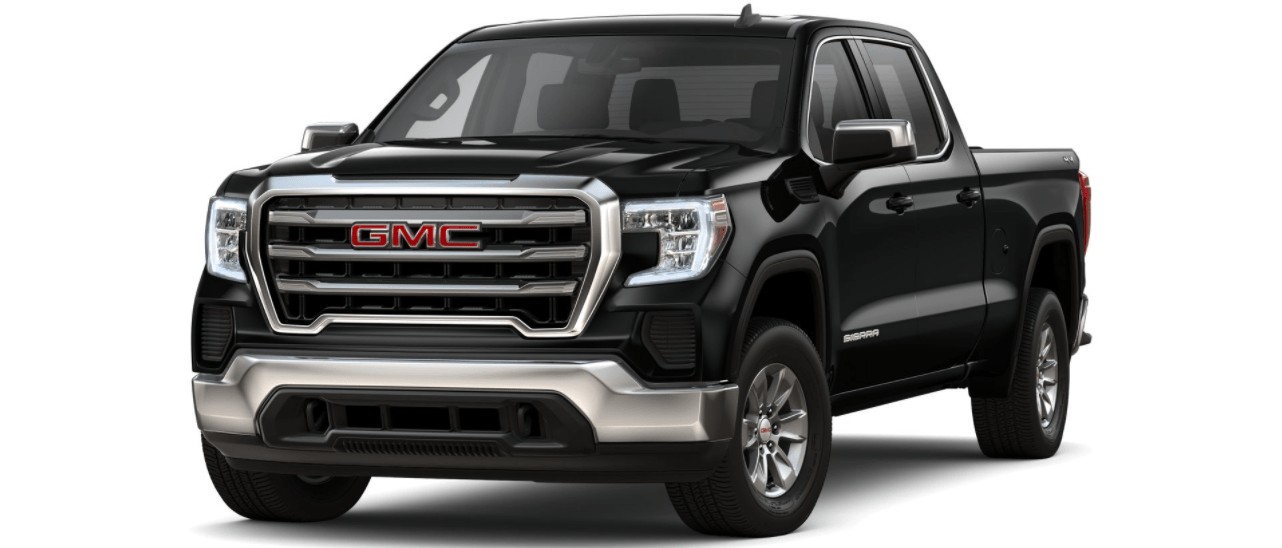
The top surface is flat and substantial enough to function as a writing surface or mobile desk, with a non-slip material that helps secure items during travel.
The Sierra’s dashboard and control layout have been specifically engineered to function harmoniously with the bench seat configuration. The column-mounted shifter preserves legroom for the center position without feeling like an afterthought, operating with precision that belies its utilitarian purpose.
Climate and infotainment controls are positioned higher on the center stack where they remain accessible to all front passengers, with physical buttons and knobs for critical functions that can be operated even while wearing work gloves.
For commercial users and fleet managers, the bench-equipped Sierra offers particular value. The combination of three-across front seating and the standard rear bench creates a genuine six-passenger vehicle that can transport entire work crews without requiring multiple vehicles.
In the SLE trim especially, this doesn’t come with a significant compromise in comfort, making the Sierra suitable for both work duties and personal use.
Storage solutions haven’t been overlooked despite the absence of a traditional center console. GMC incorporates clever under-seat storage in bench-equipped models, along with expanded door pockets and additional dashboard compartments that collectively provide substantial capacity for storing work essentials, personal items, and travel necessities.
Through this balanced approach, GMC has preserved the practical advantages of front bench seating in the Sierra while updating the concept to meet modern expectations for comfort, safety, and convenience features proving that this traditional configuration still has relevant applications for today’s truck buyers.
Also Read: You Can Still Buy This 1980s Engine Brand New From the Factory
5. Nissan Titan S Trim
The Nissan Titan in its base S trim level stands as one of the few non-American brand pickups that continues to offer front bench seating, providing an alternative perspective on this increasingly rare interior configuration.
Nissan’s implementation of the front bench represents a thoughtful balance between traditional utility and the company’s reputation for comfortable, driver-friendly interiors.
The Titan’s front bench follows the now-standard 40/20/40 split design that has become the modern interpretation of this classic seating arrangement.
What distinguishes Nissan’s approach is the particular attention paid to making the bench comfortable for genuine three-across seating when needed.
The center position features proper contouring rather than the flat, afterthought design found in some competitors, with padding density carefully calibrated to provide reasonable comfort even on longer drives.
The cloth upholstery found even in this base trim level offers better breathability and comfort than the vinyl surfaces typically associated with work-truck configurations.
Nissan has engineered the Titan’s front cabin architecture specifically to accommodate this seating arrangement without compromise. The transmission tunnel has been designed to be less intrusive than in some competing trucks, providing better legroom for the center passenger.
The dashboard layout features a straightforward arrangement of controls positioned to be accessible from any seating position, with large, clearly marked buttons and knobs that can be operated without taking one’s eyes off the road a particularly important consideration in work environments.
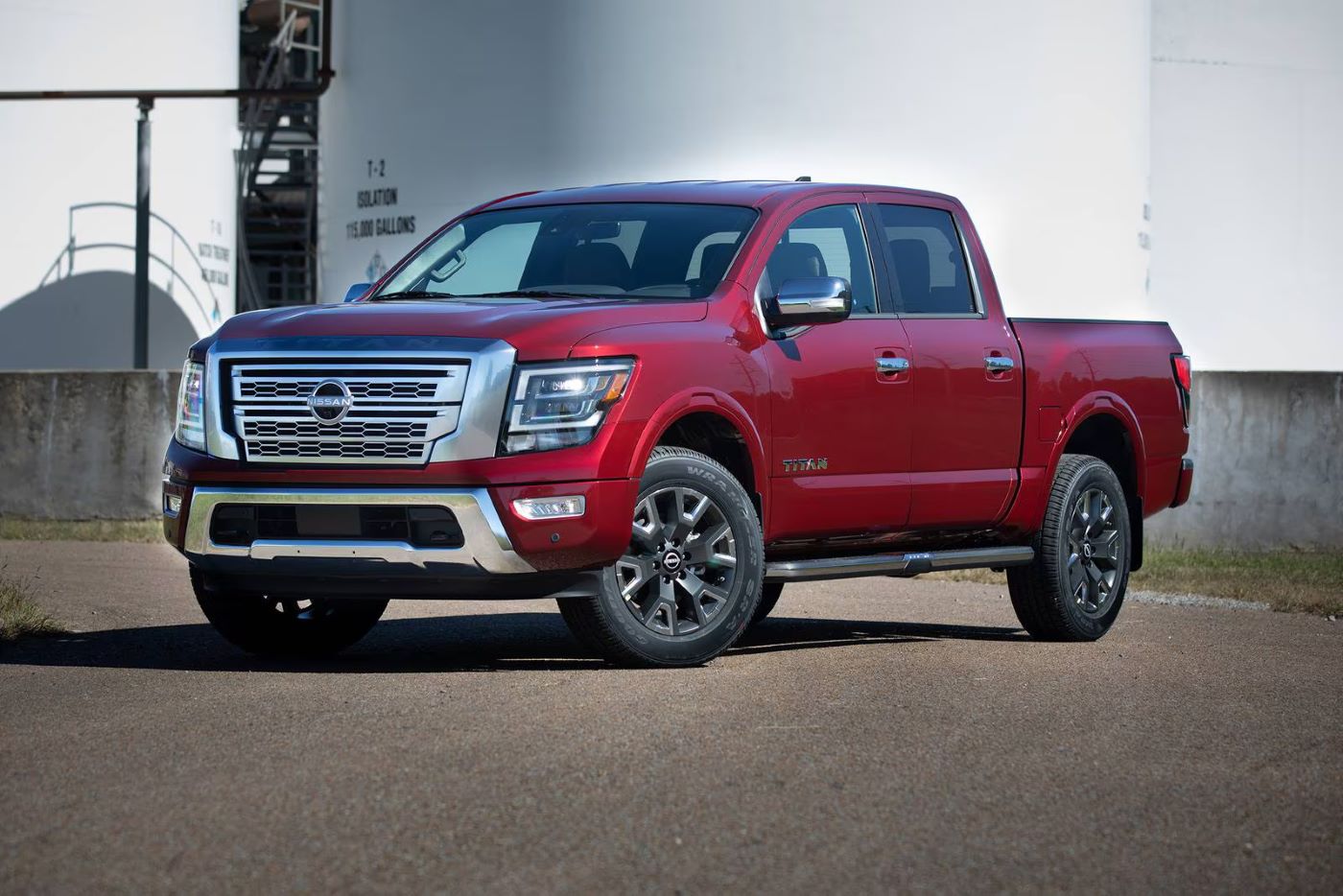
When not being used for passenger seating, the center section folds down to reveal a functional workspace that Nissan has designed with practical considerations in mind.
The armrest is positioned at a comfortable height for most drivers, while the integrated storage compartment is surprisingly spacious, with dividers that help organize smaller items that might otherwise get lost in a larger bin.
The cupholders are robustly constructed and sized to accommodate a wide range of container types, from standard coffee cups to larger insulated bottles frequently used by workers on job sites.
The column-mounted shifter, a necessary component to enable the bench seat configuration, has been designed with a substantial feel and positive engagement that inspires confidence during operation.
Unlike some column shifters that feel vague or imprecise, the Titan’s implementation provides clear detents between gear positions and operates with a mechanical precision that enhances the driving experience.
For commercial users, the Titan S with bench seating offers particular advantages. When combined with the standard rear bench, it creates a genuine six-passenger vehicle that can transport entire work crews without requiring additional vehicles.
The durable materials used throughout the cabin are specifically selected to withstand the rigors of daily work use, with stain-resistant properties and reinforced wear points that contribute to long-term durability.
Through this thoughtful implementation, Nissan demonstrates that front bench seating remains a relevant and practical option for specific use cases, particularly in work-oriented applications where maximum passenger capacity and interior versatility take precedence over the individual comfort provided by bucket seats and a full center console.
6. Toyota Tundra SR Work Truck Package
The Toyota Tundra SR with the Work Truck Package represents one of the few remaining options for front bench seating from a Japanese manufacturer, offering this increasingly rare configuration as part of its commitment to commercial users and fleet applications.
Toyota’s implementation of the front bench seat blends practical utility with the brand’s renowned attention to durability and long-term reliability.
In the Tundra SR, the front bench follows the contemporary 40/20/40 split configuration that has become the standard modern interpretation of this traditional seating arrangement.
What distinguishes Toyota’s approach is the focus on creating a genuinely functional work environment rather than merely offering the bench as a low-cost alternative to bucket seats.
The seating surfaces are upholstered in Toyota’s specialized fabric material that balances durability with reasonable comfort, featuring reinforcement in high-wear areas and stain-resistant treatment that acknowledges the demands of daily commercial use.
The ergonomics of the Tundra’s bench configuration have been carefully considered. The seat cushions provide firmer support than many competitors, a design choice that proves beneficial during long workdays by reducing fatigue.
The backrest angle has been optimized to support proper posture rather than prioritizing a laid-back, casual position, reflecting the vehicle’s work-oriented purpose. Even the center position, often an afterthought in bench seat designs features adequate padding and a proper three-point seatbelt that meets modern safety standards.
When not occupied by a passenger, the center section transforms into a surprisingly comprehensive workstation. Folded down, it reveals not just basic storage but a thoughtfully organized space with dividers for different items and materials selected specifically for durability rather than a luxury feel.
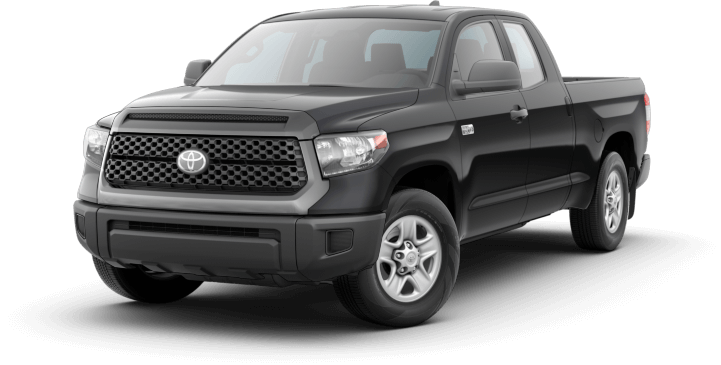
The surface is flat and substantial enough to serve as a writing desk or space for reviewing documents, a genuine mobile office solution for contractors and field supervisors.
Toyota’s attention to detail extends to the broader cabin architecture designed to complement the bench seating arrangement. The column-mounted shifter operates with the mechanical precision and durability that Toyota is known for, while essential controls are positioned higher on the dashboard where they remain accessible regardless of the seating configuration.
The climate control system features larger vents with adjustable airflow direction, ensuring comfort for all three potential front passengers not just the driver and primary passenger positions.
For fleet managers and business owners, the Tundra SR with bench seating offers particular value in its capacity to transport up to six people when combined with the standard rear bench, eliminating the need for a second vehicle in many work scenarios.
The materials throughout the cabin have been selected specifically for long-term durability under heavy use conditions, with reinforced seams, thicker thread, and special attention to areas that typically show wear first in commercial applications.
Storage solutions haven’t been overlooked despite the absence of a traditional center console. The Tundra incorporates expanded door pockets, a spacious glove compartment, and additional small-item storage areas integrated into the dashboard design, collectively providing ample space for work essentials without requiring aftermarket solutions.
Through this balanced approach to the bench seat concept, Toyota demonstrates its understanding of commercial users’ practical needs while maintaining the core values of durability and functionality that have defined the Tundra’s position in the full-size truck market.
7. Chevrolet Express Passenger Van
The Chevrolet Express Passenger Van stands as one of the few remaining vehicles where front bench seating isn’t merely an option but comes standard across most configurations, reflecting its purpose-built design for maximum passenger capacity and commercial utility.
This venerable full-size van continues to offer a genuine three-across front seating arrangement that harkens back to an earlier automotive era while meeting contemporary needs for people-moving efficiency.
Unlike the pickup trucks that offer bench seating primarily in their most basic work-oriented trims, the Express Passenger Van maintains this configuration even in its more well-equipped variants, acknowledging that maximum seating capacity remains the primary consideration for most buyers in this segment.
The front bench in the Express is a true full-width seat rather than the 40/20/40 split configuration found in most modern pickups, designed specifically to accommodate three adults comfortably across its entire surface.
Chevrolet has engineered this seating arrangement with practical considerations at the forefront. The bench itself features commercial-grade upholstery, typically vinyl in base models with cloth available in higher trims specifically selected for durability under high-use conditions.
The padding density strikes a balance between initial comfort and long-term support, recognizing that these vehicles often serve in shuttle applications where drivers may spend entire shifts behind the wheel.
The flat seating surface facilitates easy entry and exit, an important consideration for commercial drivers who frequently get in and out of the vehicle.
The driver environment has been thoughtfully adapted to complement the bench seating arrangement. The steering column features extensive adjustment range to accommodate drivers of different statures despite the fixed nature of the bench.
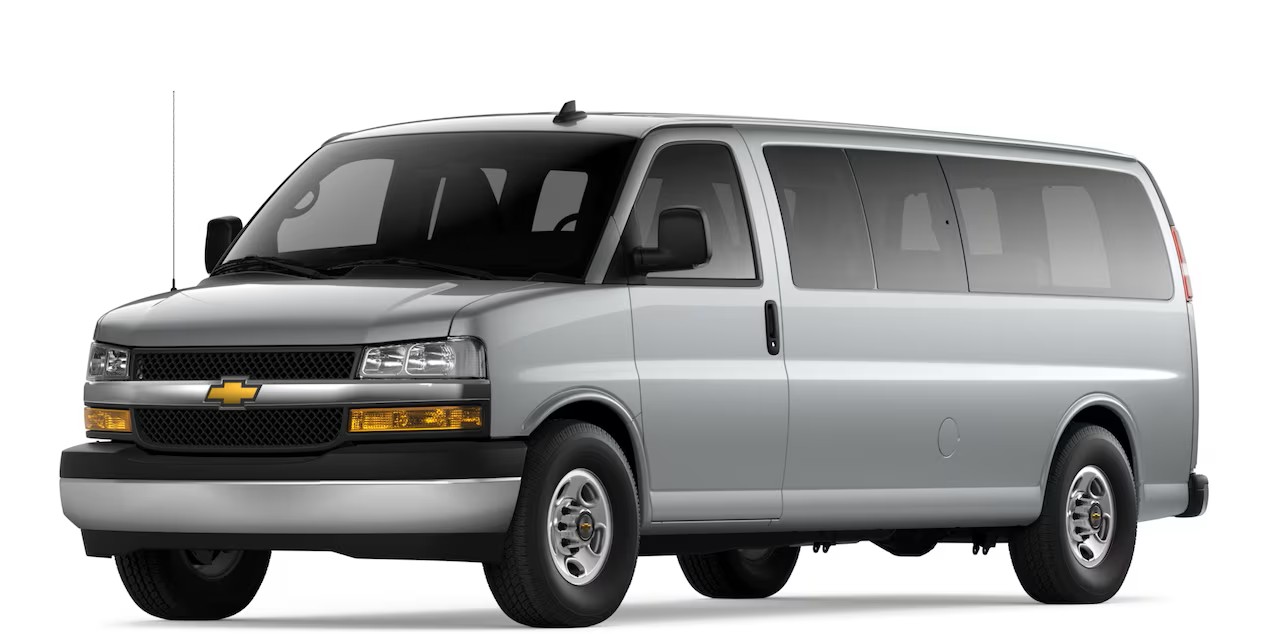
The shifter is mounted on the column rather than the floor, preserving legroom for the center passenger while providing positive engagement between gear positions.
The gauge cluster and essential controls are positioned to maintain visibility and accessibility regardless of the driver’s seating position on the bench.
For shuttle services, church groups, and commercial fleet operators, the Express Passenger Van’s front bench contributes to its impressive total capacity, allowing configurations that can transport up to 15 passengers when combined with the rear seating arrangements.
This makes it one of the most efficient people-movers available without requiring a commercial driver’s license, an important consideration for organizations that rely on volunteer drivers or employees whose primary responsibilities don’t include driving.
The practical advantages extend beyond mere capacity. The continuous bench design allows for flexibility in how the front space is utilized. When not carrying three front passengers, the middle position can serve as an impromptu storage area for items that need to remain easily accessible, clipboards, routing information, passenger manifests, or equipment that doesn’t fit conveniently elsewhere in the vehicle.
Safety hasn’t been overlooked despite the traditional seating arrangement. All three positions feature three-point seatbelts, and the Express includes modern safety features like stability control, traction control, and available driver assistance technologies that help mitigate the inherent challenges of maneuvering a full-size van, particularly when fully loaded with passengers.
Through this straightforward yet effective implementation of front bench seating, the Chevrolet Express Passenger Van demonstrates that for specific commercial applications, this traditional seating arrangement remains not just relevant but optimal prioritizing passenger capacity and operational efficiency in a package designed for serious work.
8. GMC Savana Passenger Van
The GMC Savana Passenger Van continues to offer standard front bench seating across its lineup, preserving this increasingly rare configuration as part of its focus on maximum passenger capacity and commercial versatility.
As GMC’s full-size people mover, the Savana represents one of the few remaining vehicles where a genuine three-across front seating arrangement comes standard rather than as an optional configuration.
GMC’s implementation of the front bench in the Savana emphasizes utility and durability above all else, reflecting the vehicle’s primary purpose in fleet and commercial applications.
Unlike the 40/20/40 split benches found in pickup trucks, the Savana features a true full-width bench designed to maximize available seating space across the entire front cabin.
The seat itself is engineered with commercial use in mind, featuring robust internal structure, high-density foam that resists compression over years of service, and upholstery materials selected specifically for durability rather than luxury feel.
What distinguishes GMC’s approach to the front bench in the Savana is the attention to detail in making this traditional seating arrangement work harmoniously with modern requirements.
The bench is mounted slightly higher than in passenger cars, providing better visibility for all three front occupants an important consideration given the Savana’s size and the need for clear sightlines in commercial driving scenarios.
The backrest angle has been optimized to support proper posture during extended driving periods, acknowledging that many Savana drivers operate the vehicle as part of their primary occupation.

The entire front cabin architecture has been designed specifically around this seating configuration. The dashboard extends flat across the full width of the interior, positioning climate vents to provide airflow for all three potential occupants rather than focusing exclusively on the driver and right passenger positions.
The column-mounted shifter necessary to preserve the bench configuration operates with mechanical precision despite its utilitarian purpose, with clearly defined detents between gear positions that provide positive feedback during operation.
For shuttle services, church groups, tour operators, and other organizations that require maximum passenger capacity, the Savana’s front bench contributes to its ability to transport up to 15 people in extended wheelbase configurations.
This makes it one of the most efficient people-moving solutions available without requiring a commercial driver’s license, an important consideration for many non-profit organizations and businesses whose transportation needs exceed the capacity of standard passenger vehicles but don’t justify the expense and regulatory requirements of a full-size bus.
Safety considerations haven’t been neglected despite the traditional seating configuration. All three front positions include three-point seatbelts, and the Savana incorporates contemporary safety features, including stability control, traction control, and available driver assistance technologies that help manage the challenges inherent in operating a full-size van, particularly when fully loaded with passengers and their belongings.
9. Ford Transit Passenger Van
The Ford Transit Passenger Van continues the tradition of offering front bench seating in specific configurations, representing one of the few modern vehicles where this increasingly rare seating arrangement remains available.
As Ford’s versatile people-mover platform, the Transit’s bench seat option reflects a practical approach to maximizing passenger capacity in commercial and institutional applications.
Unlike some older van designs that featured bench seating as the only configuration, the Transit offers this as an available option rather than standard equipment, acknowledging that different usage scenarios have different interior requirements.
When selected, the front bench provides genuine three-across seating, contributing to the Transit’s impressive total passenger capacity that can accommodate up to 15 people in extended wheelbase, high-roof configurations.
Ford has modernized the concept of bench seating in the Transit through thoughtful engineering and attention to practical details. The bench itself features a more contoured design than the flat benches of earlier-generation vans, with subtle bolstering that provides better support for outboard passengers while maintaining accessibility for the center position.
The upholstery materials have been selected specifically for durability in high-use settings, with base models featuring heavy-duty vinyl surfaces that resist stains and wear, while cloth options are available in higher trim levels for operators who prioritize passenger comfort.

The ergonomics of the Transit’s front cabin have been carefully adapted to complement the bench seating arrangement. The steering wheel position and dashboard layout have been designed to accommodate drivers of different statures despite the fixed nature of the bench seat.
The gear selector has been moved from the floor to a dash-mounted position a more modern solution than the traditional column shifter that similarly preserves legroom for the center passenger while offering intuitive operation.
What distinguishes Ford’s implementation is how well the bench seating option integrates with the Transit’s overall focus on versatility. The front cabin includes numerous storage solutions specifically designed to compensate for the absence of a traditional center console, including expanded door pockets, dashboard compartments, overhead storage bins, and specialized holders for items like clipboards and mobile devices that commercial drivers frequently need to keep within reach.
For shuttle services, church groups, airport transportation providers, and other organizations that prioritize maximum passenger capacity, the Transit’s front bench configuration offers particular value.
When combined with the various rear seating arrangements available, it creates one of the most space-efficient people-moving solutions on the market a vehicle that provides institutional passenger capacity without requiring a commercial driver’s license in most configurations, an important consideration for organizations that rely on volunteer drivers or employees whose primary responsibilities don’t include driving.
Safety hasn’t been overlooked despite the traditional seating arrangement. All three front positions include three-point seatbelts that meet contemporary safety standards, and the Transit incorporates modern active and passive safety features, including advanced airbag systems, stability control, available driver assistance technologies, and structural reinforcements that help protect all occupants regardless of seating position.
Through this balanced approach to front bench seating, the Ford Transit Passenger Van demonstrates that this traditional configuration still serves valuable purposes in specific commercial applications, prioritizing maximum passenger capacity while adapting the concept to meet modern expectations for safety, comfort, and functionality.
10. Mercedes-Benz Sprinter Passenger Van
The Mercedes-Benz Sprinter Passenger Van offers front bench seating in certain configurations, representing perhaps the most premium implementation of this increasingly rare seating arrangement in today’s market.
As Mercedes-Benz’s versatile commercial people-mover, the Sprinter brings European design sensibilities and engineering precision to the concept of three-across front seating, demonstrating that this traditional configuration can be executed with surprising refinement.
Available primarily in fleet-oriented configurations rather than standard across the range, the Sprinter’s front bench option contributes to its impressive total passenger capacity allowing configurations that can transport up to 15 people when combined with the various rear seating arrangements.
What distinguishes Mercedes-Benz’s approach is the attention to detail in making this utilitarian seating configuration more comfortable and ergonomically sound than most competitors.
The bench itself features more sophisticated contouring than typically found in commercial vans, with padding density and firmness carefully calibrated to provide better support during long drives.
The upholstery materials, while still selected primarily for durability, offer a more premium feel than the industrial-grade vinyl common in the segment.
Higher trim levels even offer cloth surfaces with reinforced wear points that balance longevity with passenger comfort acknowledging that many Sprinter operators use these vehicles for premium shuttle services where passenger experience matters.

The entire front cabin architecture has been designed with European attention to ergonomics. The driving position remains comfortable despite the bench configuration, with extensive steering wheel adjustment and optimized pedal placement that accommodates drivers of varying statures.
The dashboard layout positions essential controls within easy reach regardless of where the driver sits on the bench, with the trademark Mercedes-Benz clarity in instrumentation and logical grouping of functions.
Unlike domestic competitors that typically use column-mounted shifters with bench seat configurations, the Sprinter implements a dashboard-mounted gear selector, a more elegant solution that preserves legroom for the center passenger while offering precise engagement between gear positions.
This arrangement also allows for a more streamlined dashboard design that contributes to the vehicle’s relatively car-like driving experience despite its commercial purpose.
For premium shuttle services, hotel transportation providers, and corporate fleet operators, the Sprinter’s refined take on front bench seating offers particular value. It allows these businesses to maximize passenger capacity without compromising the upscale experience their clients expect.
The ability to transport more passengers per vehicle improves operational efficiency and cost-effectiveness while maintaining a professional presentation. The Sprinter hasn’t sacrificed functionality in pursuing this more refined approach.
The front cabin includes thoughtfully designed storage solutions that compensate for the absence of a center console, including tiered dashboard compartments, oversized door pockets, overhead storage options, and specialized holders for documents and mobile devices that commercial drivers need to keep accessible.
11. Chevrolet Suburban LS Fleet Model
The Chevrolet Suburban in its LS Fleet configuration remains one of the last full-size SUVs to offer front bench seating, preserving this increasingly rare feature for commercial and institutional buyers who prioritize maximum passenger capacity.
This special-order option transforms the Suburban into a genuine nine-passenger vehicle a distinction that makes it uniquely valuable for specific transportation needs that fall between standard SUVs and full-size vans.
Unlike the pickup trucks that offer bench seating in a 40/20/40 split configuration, the Suburban’s front bench is designed as a more integrated three-across seating surface, optimized for practical passenger use rather than occasional utility.
The bench itself features firmer padding than most passenger vehicles, acknowledging the fleet-oriented nature of this configuration, but still provides reasonable comfort for all occupants with cloth upholstery that balances durability with passenger comfort.
What makes the Suburban’s implementation particularly notable is how well it integrates this traditional seating arrangement into a modern, well-equipped vehicle.
Unlike stripped-down work trucks, where bench seats often signify a basic specification, the Suburban LS Fleet model maintains most of the comfort and convenience features found in retail models, including power accessories, comprehensive climate control, and core infotainment functionality.
This makes it suitable not just for utilitarian transportation but for applications where passenger comfort remains important despite the need for maximum capacity.

The front cabin architecture has been thoughtfully adapted to accommodate the bench configuration. The dashboard extends flat across the entire width of the vehicle, with climate vents positioned to serve all three front positions rather than focusing exclusively on the outboard seats.
The column-mounted shifter preserves legroom for the center passenger while offering positive engagement between gear positions. The steering wheel position and pedal layout have been designed to provide a comfortable driving position despite the fixed nature of the bench.
For government agencies, security services, tour operators, and large families, the Suburban with front bench seating offers unique advantages. When combined with the standard three-person second and third-row benches, it provides nine-passenger capacity in a package that remains more maneuverable and car-like than full-size vans, easier to park, more comfortable to drive, and with better road manners, particularly on highways and winding roads.
The substantial cargo space behind the third row further distinguishes it from most three-row crossovers, allowing it to transport both maximum passengers and their luggage simultaneously. Safety hasn’t been compromised despite the traditional seating arrangement.
All three front positions include three-point seatbelts, and the Suburban incorporates Chevrolet’s comprehensive safety systems, including stability control, traction control, and a suite of airbags designed to protect occupants in all seating positions. The vehicle’s substantial mass and purpose-built frame also provide inherent crash protection that contributes to occupant safety.
12. GMC Yukon Fleet Special Order
The GMC Yukon in its Fleet Special Order configuration stands as one of the final full-size SUVs available with front bench seating, preserving this increasingly rare feature for institutional buyers and fleet operators who prioritize maximum passenger capacity.
Available only through fleet channels rather than standard retail ordering, this special configuration transforms the Yukon into a genuine nine-passenger vehicle a capability that makes it uniquely valuable for specific transportation needs.
GMC’s implementation of front bench seating in the Yukon reflects a thoughtful balance between traditional utility and the brand’s professional-grade positioning.
The bench itself features a more refined design than those found in basic work trucks, with subtle contouring that provides better support for all three potential occupants.
The materials used strike a balance between durability and appearance, with heavy-duty cloth upholstery that resists wear while maintaining a presentable appearance appropriate for passenger transportation rather than strictly utilitarian applications.
What distinguishes the Yukon’s front bench configuration is how seamlessly it integrates this traditional seating arrangement with the vehicle’s otherwise modern character.
Despite being ordered primarily for fleet use, these models maintain most of the comfort and convenience features found in retail Yukons, including power accessories, automatic climate control, and core infotainment functionality.
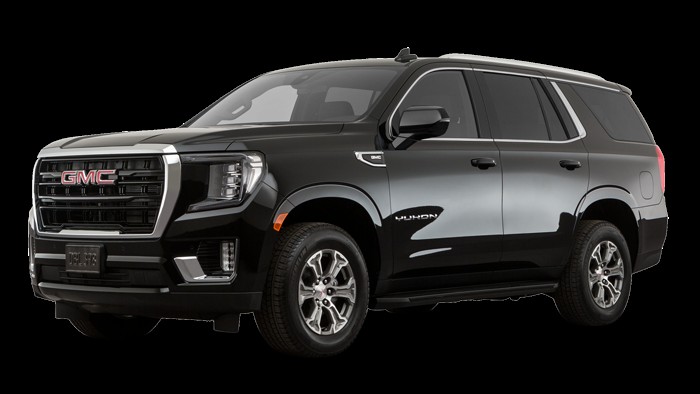
This makes them suitable not just for basic transportation needs but for applications where passenger comfort remains important alongside maximum capacity requirements.
The entire front cabin architecture has been thoughtfully designed to accommodate the bench seating arrangement. The dashboard layout positions essential controls where they remain accessible regardless of the driver’s position on the bench.
The column-mounted shifter necessary to enable the full-width seating surface operates with precision that belies its utilitarian purpose, with clearly defined detents between gear positions that provide positive feedback during operation.
For government agencies, executive transportation services, security details, and organizations requiring movement of larger groups, the Yukon with front bench seating offers distinct advantages.
When combined with the standard three-person second and third-row benches, it provides nine-passenger capacity in a package that maintains the refined driving experience GMC is known for, substantially more car-like than full-size vans with better handling, acceleration, and braking performance.
The substantial cargo capacity behind the third row further distinguishes it from most three-row crossovers, allowing it to transport both maximum passengers and their luggage without compromise.
Safety considerations haven’t been neglected despite the traditional seating configuration. All three front positions include three-point seatbelts that meet contemporary safety standards, and the Yukon incorporates GMC’s comprehensive safety systems, including stability control, trailer sway control, and a full complement of airbags designed to protect occupants in all seating positions.
The vehicle’s robust construction and substantial mass also provide inherent crash protection that contributes to occupant safety in various collision scenarios.
Also Read: Why Mechanics in Remote Villages Prefer These Specific Engines

